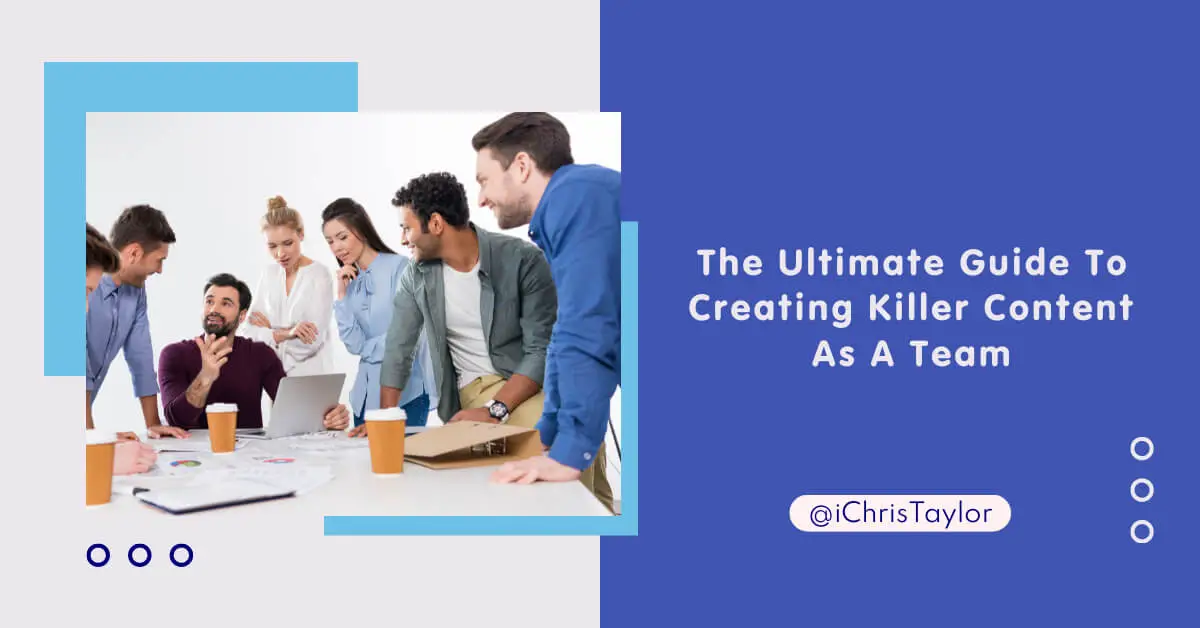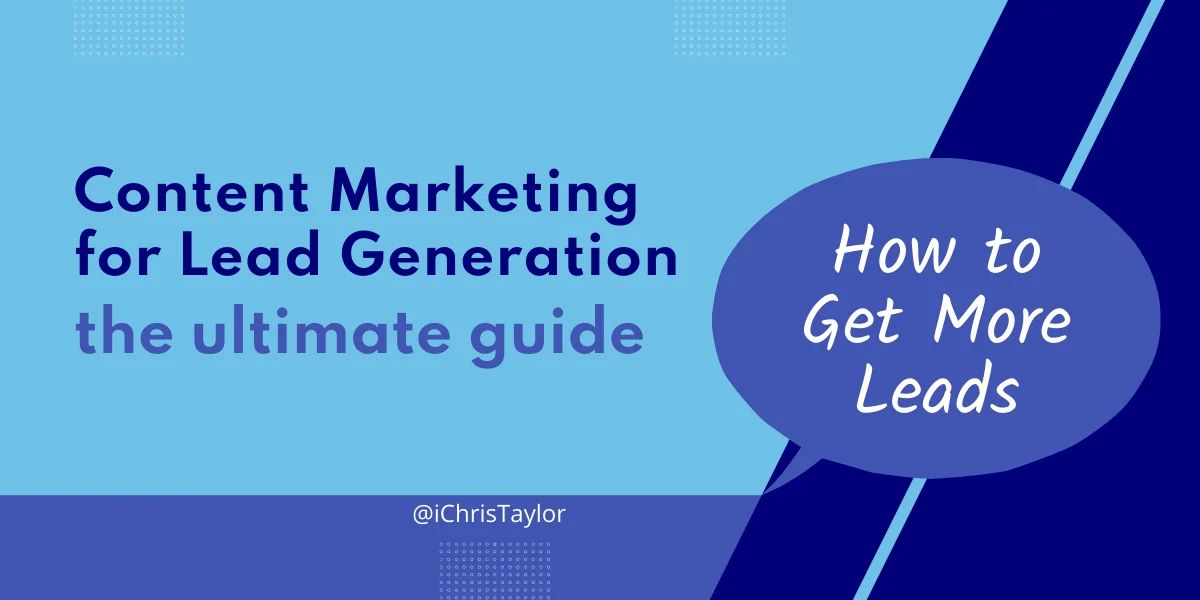“When you need to persuade someone to take action, you are doing marketing.”
Seth Godin
Can you think of any marketing tools that you use today?
Maybe you already have a website – that is a marketing tool. Do you have social media accounts? These are also marketing tools (or marketing channels) that can be used to promote your business to potential customers.
Anytime you see a TV ad – that’s marketing. Even the ads that aren’t for you. When a business advertises itself to a mass market, what is it really trying to achieve? Openreach has launched a new TV campaign. But they aren’t selling us anything. They’re building their brand through marketing.
But let’s not get advertising and marketing mixed up
Not all marketing is advertising. In fact, most of the time we don’t spend any money on marketing. You don’t need a budget to do marketing. When most people refer to a marketing budget, it really just means they are going to spend money on advertising, promotion, or another service such as design.
How many people do you know work in marketing?
Let’s think back to our definition. If you’ve ever written a business case, or advocated on behalf of your business, you have engaged in a marketing activity. You’ve persuaded another person (or persons) to believe in your project or your business area. As a result of your persuasion, someone has taken action.
So marketing is actually very easy, and we don’t need to think about it?
Well no. If only. Marketing is getting harder as competition for our attention is increasing. We see this as an opportunity. With an ever increasing number of channels to use, it is becoming necessary to put marketing strategies and plans in place so that we can reach the right people.
What can we learn from marketing?
You only have a few seconds (at most) to grab someone’s attention. This means your content has to be special. You need to offer something new or different in order to stand out from the crowd. If your service isn’t particularly interesting, your marketing has to be remarkable. Can you think of a remarkable piece of marketing?
Product marketing
A great product or service sells itself. If a product is difficult to use no amount of marketing can change that. However, if you have a decent product, what slogan can you come up with to convey the message behind the product?
Can you name the brands behind these slogans?
- Go on…Just do it.
- Let’s get Brexit done.
- The Best a Man Can Get.
- What gives you wings?
Do those slogans accurately reflect the intent behind the product or service?
As a brand you need to make every impression count. However, first contact and first impression are not always the same moment. Therefore, at Highly.Digital, we always try to be authentic. Our campaigns are built on facts and our key messages drive home the truth. It is important that we focus on core values and integrity – qualities important to our customers.
Marketing gives you the opportunity to own your message. You can respond directly to your customer. You can engage in meaningful conversation. Marketing should be about enhancing your product or service and that’s what we aim to deliver for you.
Go deeper: Understanding the role of marketing operations management is a part of grasping what marketing is.
Have you heard about permission marketing?
You might think GDPR invented permission marketing, but you’d be wrong. ‘Opting in’ to marketing has been around for a long time.
Ever picked up an Argos catalogue or signed up to a newsletter?
That’s a form of permission marketing.
Do you follow any brands on social media?
That’s permission marketing.
Anytime you volunteer your attention in return for learning more about a brand, product or service you are giving your permission to receive marketing.
Related: Understanding your audience and making sure your message resonates is a crucial part of marketing.
Why is this important?
When your customers become active participants in the process, they are more likely to pay attention to the marketing message. Some of your followers will become ‘super fans’. A super fan is someone who becomes your advocate. Their influence is very important for you.
How can you harness permission marketing?
When your customer tells their friends and family about how great the product or service is, they are more likely to act. This is word of mouth marketing and it can be very powerful.
Building trust.
There is often a disconnect between the information people find online about a service and the experience of the actual service itself. This is bad for everyone. The feedback loop is as essential for service improvement as it is for service design.
It has never been easier for people to find information online. However, are they finding the right information? Are they finding your information? How do you know?
There needs to be ongoing collaboration between the product / service team and the marketing and communications team. What would happen if the information on your website was out of date? There will be a breakdown in trust between the user and the provider.
Did you know: Creating an effective brand messaging strategy is a key aspect of marketing.
Communities
Humans are part of groups and like to form groups. Being part of something is inherently important for us all. We aren’t quite as bad as lemmings, but we do tend to follow people we respect. In online terms, there is a social bond between people who have never met in person. The shared interest is what becomes their bond.
We can provide advice on how to communicate directly to online communities so you can harness their power.
What marketing channels are available and what do they all mean?
So far we’ve covered a few different types of marketing. Each has their place and each can use a very different approach to reach the desired audience. How do you decide which tool to use to reach your target audience?
We call the different tools, channels. This could be your website, an email newsletter, a billboard, a facebook page, a youtube channel etc. The list is constantly evolving.
Knowing where to reach your audience is a skill in itself. Just because someone is online, doesn’t mean they will know about you. Just because they have a facebook profile, doesn’t mean they follow you. Just because they are following you on twitter doesn’t mean they saw that tweet you sent at 3:40 on Wednesday afternoon.
Knowing where your audience is, is half the battle. You are also competing for their attention. Each channel requires different content. While the message will be the same, you need to take advantage of the features that each channel offers.
This is more than just thinking creatively. This is about understanding how the news feed works and how you can engage with people on that platform.
Go where you customers are!
When we develop a marketing campaign, we start with personas.
What is a persona?
A persona is a fictional person who we think will use a service or product. By creating a persona we start to understand what the user needs, experiences, behaviours and goals might be. This persona will define who our audience is and what content we think will work best for them.
Any web pages that we create, will be targeted at a particular audience.
Do we create content or do we design content for the user?
Learn more about content design and user intent.
What if we develop a persona and we don’t think that person will visit our website?
Part of developing the persona is to come up with ways to engage with that person. These tactics will consider all the different places that person might visit online. Do they use social media? Do they belong to an online community e.g. mumsnet?
What this really means is that we shift our focus from inbound to outbound marketing. When we can’t assume someone will find us, we have to find them. This means we engage in social media, we place ads, we use an influencer. We do all of this to increase are chances of reaching that person who has no idea we exist. We’ll cover this topic in more depth in a later article.
Today, you can no longer write a blog post and think your job is done. Ask yourself, who is reading it and who visits my website? Are they the same people that are going to use the product/service? If not, then you need to design content for them and publish it to channels they are using. We can no longer expect people to visit our website unprompted.
Content design focuses on the user. So, when Highly.Digital creates content, we do so with the user in mind. We are creating content that appeals to the target audience. We take this approach because we are results focused and we believe this delivers value for money for you.
Are you optimised?
Search Engine Optimisation (SEO) is the practice of increasing the quantity and quality of traffic to your website through organic search results.
Quality means that the visitor to your website gets the information promised to them by the search results. For example if you google ‘What is the VAT rate in the UK?’ You should find a link to the gov.uk website with the actual VAT rate.
Quantity: the more people that find the right information on your website, then the better your content is.
Organic search results refers to any traffic that comes to your site from search, that you haven’t paid for.
Find out how Highly.Digital can enhance the performance of your website.
We can’t reference search engine optimisation without referring to Search Engine Marketing (SEM).
Search Engine Marketing refers to paid for advertising. When you make a search on a search engine, you will often see ads displayed in the results. These ads are placed by someone buying ads to be placed beside a keyword.
Other terms you might hear include PPC (pay-per-click), CPC (Cost-per-click), CPM (Cost-per-thousand impressions).
Summing up
We’ve only just scratched the surface, but I hope you have a better understanding of how we can use marketing to promote your product or service. I’d love to hear your feedback on this article. Reach out to me on twitter or LinkedIn.




